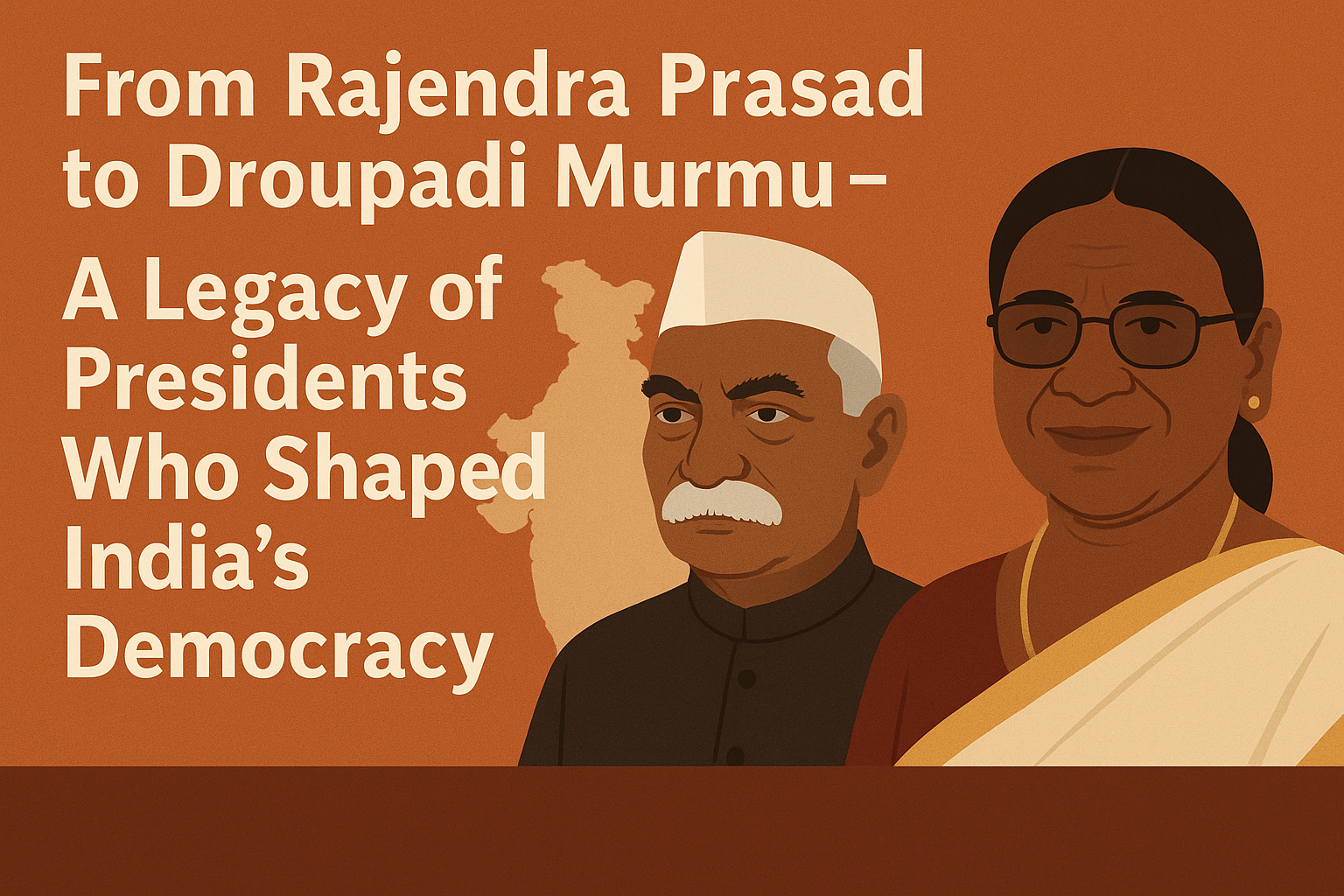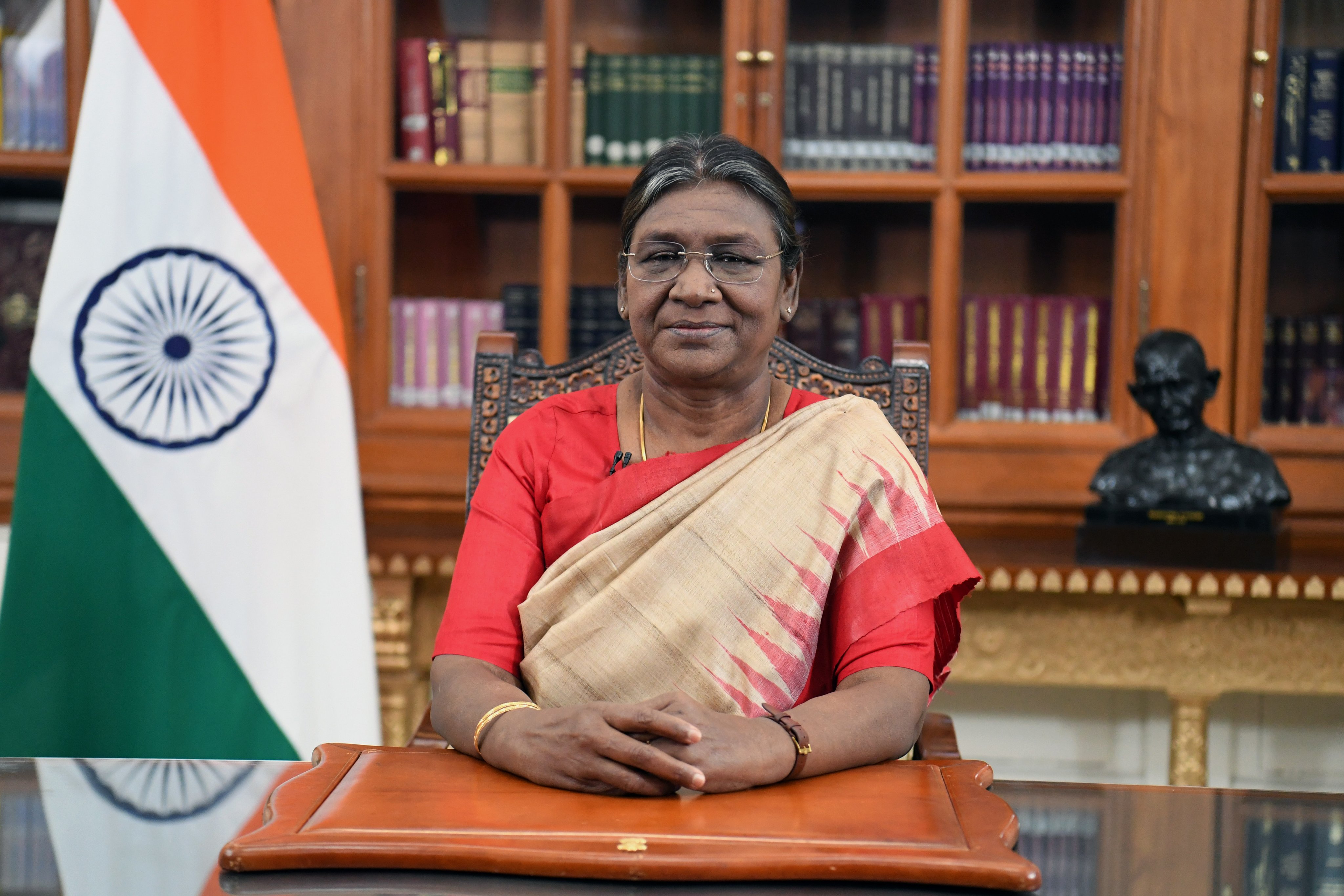India's journey as a republic has been guided by a remarkable lineage of Presidents each reflecting the spirit of their time. From Dr. Rajendra Prasad in 1950 to Droupadi Murmu in 2025, these leaders have symbolized continuity, stability, and constitutional integrity in the world's largest democracy.
Why the Presidency Matters in India
While largely ceremonial, the Indian President is the guardian of the Constitution. Their role becomes crucial during:
- Hung parliaments
- National emergencies
- Constitutional crises
The office represents national unity above political lines, reflecting India's diversity and democratic values.
List of Presidents of India (1950–2025)
| No. | Name | Term | Notable Facts |
|---|---|---|---|
| 1 | Dr. Rajendra Prasad | 1950–1962 | Only President to serve two full terms |
| 2 | Dr. Sarvepalli Radhakrishnan | 1962–1967 | Philosopher-President, former Vice President |
| 3 | Dr. Zakir Husain | 1967–1969 | First Muslim President; died in office |
| — | V. V. Giri (Acting) | May–July 1969 | Became Acting President after Husain's death |
| — | Mohammad Hidayatullah (Acting) | July–August 1969 | Chief Justice; served briefly as Acting President |
| 4 | V. V. Giri | 1969–1974 | Only President elected as independent candidate |
| 5 | Fakhruddin Ali Ahmed | 1974–1977 | Died in office during the Emergency |
| — | B. D. Jatti (Acting) | Feb–July 1977 | Served as Acting President after Ahmed’s death |
| 6 | Neelam Sanjiva Reddy | 1977–1982 | Only unopposed President in history |
| 7 | Giani Zail Singh | 1982–1987 | First Sikh President |
| 8 | R. Venkataraman | 1987–1992 | Former Vice President and Defence Minister |
| 9 | Dr. Shankar Dayal Sharma | 1992–1997 | Known for his scholarship and calm diplomacy |
| 10 | K. R. Narayanan | 1997–2002 | First Dalit President |
| 11 | Dr. A. P. J. Abdul Kalam | 2002–2007 | “Missile Man” and people’s President |
| 12 | Pratibha Patil | 2007–2012 | First woman President |
| 13 | Pranab Mukherjee | 2012–2017 | Veteran statesman with deep political experience |
| 14 | Ram Nath Kovind | 2017–2022 | Second Dalit President |
| 15 | Droupadi Murmu | 2022–present (2025) | First tribal woman President |
Milestones in Representation
- Inclusivity: The Presidency has increasingly reflected India’s pluralism from minorities to women to underrepresented regions.
- Crisis Leadership: Presidents like Narayanan, Venkataraman, and Mukherjee showed quiet resolve during coalition governments and political uncertainty.
- Mass Appeal: A.P.J. Abdul Kalam transformed the public perception of the presidency, especially among the youth.
Conclusion
From constitutional guardianship to symbolic leadership, India’s Presidents have upheld the spirit of the republic. As Droupadi Murmu continues her term in 2025, the legacy of this office stands as a testament to India’s democratic depth and evolving social fabric.



